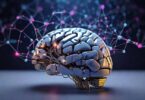AI applied in otorhinolaryngology has currently revolutionized access to medical information in a transcendental way.
Otorhinolaryngology (ENT) is a medical specialty that includes the diagnosis, treatment and prevention of all diseases or discomforts of the ears, nose, and throat.
AI can be used in this medical specialty to advance disease diagnosis processes and new treatments, to improve and personalize patient care.
Among others, AI has allowed workers in the field of Otorhinolaryngology:
- Automate the search and analysis of medical data.
- Personalize patient care. Artificial intelligence (AI) can be used to create personalized treatment plans that fit the specific needs of each patient.
- Improve communication between health professionals.
Applications of AI in ear diseases:
- Audiology has experienced an advance in the performance of hearing aids or hearing aids with the application of AI.
- Automation in the diagnosis of a hearing deficit.
- Artificial intelligence can help in solving cochlear implant problems remotely.
- AI has enabled the restoration of speech in paralyzed people, as well as predicting speech and language.
- Through otoscopic images, AI has allowed the diagnosis of ear diseases and surgical planning, using virtual reality simulators.
Application of AI in nose pathologies:
- Artificial intelligence can be a good tool in classification and quantification by determining the images of a paranasal sinus tomography.
- AI can help in scheduling surgeries through virtual reality simulators.
Rhinology: The use of AI in rhinology has been, mainly, to improve diagnostic evaluation in CT images of paranasal cavities and in sleep medicine studies; AI algorithms have also been used.
Laryngology:
In this field, an automatic diagnostic system has been designed to detect laryngeal cancer and pre-malignant laryngeal lesions. A system based on deep learning has also been generated to differentiate normal and pathological voice samples.
Artificial intelligence and ear infection
As an example of artificial intelligence we have a Smartphone application called OtoDx, developed by the Massachusetts Eye and Ear Hospital, in the United States. This app has demonstrated over 95 percent accuracy in diagnosing an ear infection.
The applications of artificial intelligence in the field of otorhinolaryngology have focused on perfecting the genetic and proteomic diagnosis of patients with head and neck oncological pathology and on the development of algorithms to optimize the detection and understanding of language.
FONT
https://www.scielo.cl/scielo.php?script=sci_arttext&pid=S0718-48162022000200244
https://www.scielo.cl/scielo.php?script=sci_arttext&pid=S0718-48162019000100007
https://www.gaes.es/blog/salud-auditiva/inteligencia-artificial-y-salud-auditiva/
OTHER ARTICLES OF INTEREST
Where do you take care of your health today?







